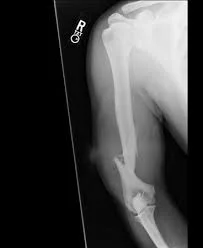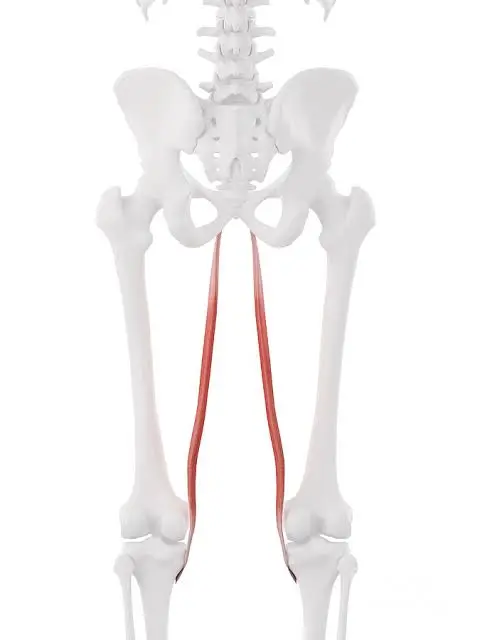Body Dysmorphic Disorder (BDD)
Table of Contents
What is Body Dysmorphic Disorder (BDD)?
Body Dysmorphic Disorder (BDD) is a mental health condition characterized by an obsessive preoccupation with a perceived flaw in one’s physical appearance.

BDD, or body dysmorphic disorder is a self-harming condition. You can find it difficult to lead a regular life if you have BDD because of your severe dissatisfaction with the way your body looks. Many of us believe that we have physical defects. However, if you suffer from BDD, your response to this “flaw” could get out of control.
Importance
One of the conditions with a significant risk of self-harm or suicidal thoughts and actions is body dysmorphic disorder.
Epidemiology
According to experts, 2.4% of adult Americans suffer from BDD. About 2.2% of men and those assigned male at birth are affected, compared to 2.5% of women and those assigned female at birth. In people outside of the United States, the prevalence is 1.7% to 2.9%.
The most likely times for BDD to begin are in your teen or early adult years. Individuals typically have BDD at the age of 12 or 13. Before the age of 18, two-thirds of BDD sufferers experience it. But maturity can also be the onset of BDD.
Causes
Body dysmorphic disorder is believed to be caused by a confluence of biological, psychological, and environmental variables. Among them are,
• Genetics
If a first-degree relative—a kid, biological parent, or biological sibling—has BDD, your chances of developing it are increased significantly, ranging from three to eight times higher.
• Disturbances in brain chemistry, structure, and activity
Individuals suffering from borderline personality disorder frequently exhibit hyperactivity or abnormal brain activity. Controlling thoughts and behaviors associated with the illness is challenging because of these variances.
• Popular media and cultural
• Influences
Standards of beauty and attractiveness vary among civilizations. Your ideas and behaviors related to BDD may be influenced by popular culture, media, or a mix of these factors
• A Complain of child harassment
Having had a difficult upbringing increases your risk of developing borderline personality disorder (BDD).
Risk factors
Specific risk factors do not exist for the development of BDD. Usually, it starts during your teenage or adolescent years. According to experts, BDD affects roughly one person out of every 100. Same affection in male and female. Among the elements that could lead to BDD are:
• A history of BDD or a related mental illness in the family
• Exceptionally high brain chemical levels
• Characteristic type
• Experiences in life
Symptoms
BDD has an impact on what you think of yourself and your feelings regarding your appearance, and its symptoms can be varied.
Among the most typical are (but are not restricted to):
• Excessively focusing on at least one physical characteristic of yours that you perceive as a “flaw” or “defect,” despite the opinions of others who claim it is insignificant or unnoticeable. This may also lead you to judge yourself by the looks of others.
• Experiencing a constant need to examine or assess your appearance (by using a mirror, a window, or a reflective surface) or seeking input from others. To escape the anxiety that comes with looking at their image, some people, on the other hand, might purposefully avoid being in pictures or seeing their reflection.
• Varying your appearance regularly (tanning, hairstyle, clothing, etc.).
• Frequently checking your appearance with selfies—selfies taken with a smartphone—or changing or hiding aspects of your appearance with apps and photo filters.
• Being afraid or anxious because you believe that people are observing, criticizing, or making fun of the aspects of your appearance or body that you find undesirable. Some people get panic attacks when they look in a mirror or at reflective surfaces and see aspects of their bodies that they find offensive.
• Experiencing guilt or disgust regarding your physical attributes, particularly the ones you perceive as problematic. People with body dysmorphic disorder (BDD) frequently use terms like “ugly,” “hideous,” “deformed,” “abnormal,” “defective,” or “unattractive” to describe themselves or certain body parts.
• Harmful compulsive grooming behaviors, like trichotillomania (plucking or pulling hairs) or dermatillomania (picking at your skin). These are distinct mental health disorders with different treatment modalities from borderline personality disorder (BDD).
• Feeling clear of circumstances where others could see the aspects of you that you find objectionable. This may make you avoid social situations or interfere with your work or academic obligations.
• Regular medical treatments, such as cosmetic surgery, aimed at “fixing” the aspects of your appearance that you find objectionable.
• hesitant to leave the house, particularly during the day; What part of the body about which one with body dysmorphic disorder worried about?
When a person has body dysmorphic disorder (BDD), they may feel or think negatively about specific body parts. Typical places consist of the:
• Skin
Individuals who have acne or other blemishes on their skin or complexion may experience body dysphoria.
• Face
BDD frequently has an impact on how individuals perceive their faces. People who suffer from borderline personality disorder (BDD) frequently worry about the size, shape, or features of their face, particularly the lips, eyes, nose, and teeth.
• Stomach
Individuals with BDD occasionally worry about the dimensions or form of their abdomen and stomach.
Because of their sex or confirmed gender, people are more likely to suffer from body dysmorphic disorder (BDD) about certain body parts, such as:
• Hair
Particularly facial hair that doesn’t correspond with your gender identity, hair loss, and the quantity of hair on particular body parts.
• The breasts and/or chest.
• Hips, buttocks, or thighs.
• Genitals
(General genital appearance regardless of sex or confirmed gender, and penis size for men and those assigned male at birth in particular).
What is muscle dysmorphia?
One type of BDD is muscle dysmorphia. It could make you feel bad about the way your muscles look and how your body is built (either as a whole or in one or more targeted areas).
What is the level of insight?
There can be a wide range of understanding among BDD sufferers about their illness. Knowing the condition means they are aware that their reasoning is unrealistic and nonsensical. However, understanding does not reverse the condition’s effects. When diagnosing this condition, medical professionals still consider insight because it can influence BDD treatment strategies. Three primary levels of insight exist:
• High or moderate:
This indicates that you are aware of the likelihood that your perceptions or criticisms of your body are unfounded.
• Low:
This level indicates that you probably believe your body-criticism and beliefs to be true.
• An absence of insight:
Individuals with BDD frequently suffer from delusions that serve to confirm their beliefs and persuade them that their unfavorable thoughts about their bodies are correct. Delusions are convictions that you cling to tightly, despite evidence to the contrary. People may find it difficult to comprehend or process the fact that their belief is false if they lack insight into their condition. This degree of understanding is present in about one-third of BDD patients.
Complications
BDD sufferers are more prone to experience a few other mental health issues, such as:
• Melancholy.
• Food addictions.
• Disorder of compulsive behavior.
• Substance abuse disorders (including, in the case of those with muscle dysmorphia, steroid use disorder).
Diagnosis
Medical tests are not available to diagnose BDD. BDD can be diagnosed by a mental health professional (such as a psychologist or psychiatrist) by having a conversation with you regarding your symptoms, thought and behavior patterns, way of life, and other factors.
Using screening instruments, such as specifically created checklists or questionnaires, to see if you meet the diagnostic criteria for BDD is part of the diagnosis process.
You need to rule out other mental health conditions as the source of your symptoms.
People with BDD are frequently affected by other mental health conditions. These consist of eating disorders, depression, social anxiety, and obsessive-compulsive disorder.
Is It hard to diagnose?
Population with BDD don’t diagnose their condition until 11 to 16 years after the condition becomes serious enough to meet the criteria for diagnosis. That’s because people don’t get the Idea and experiences they feel are signs of a mental health condition or maybe they are afraid to ask for aid.
This means it’s important to talk about body dysmorphic disease if you notice signs of it in yourself or your family. Discussing the signs of this condition and getting help with it before It reaches the next higher level can help you or your family avoid its most severe effects.
Treatment
Despite being treatable, BDD cannot be cured. Your healthcare provider will assess BDD based on the following factors:
• The scope of this problem
• Age
• Your ability to tolerate particular medications, treatments, or procedures
• Anticipations regarding the disorder’s trajectory
• The viewpoint of the medical professionals who are providing your care
• Your choice and viewpoint
Treating BDD, like many other mental health issues, frequently entails a mix of strategies, such as:
• Psychotherapy
Various forms of psychotherapy, which are the technical term for mental health therapy, may be beneficial. The main goals of psychotherapy are to help you develop healthy thought patterns and methods for coping while also allowing you to talk about your feelings and experiences.
The two most popular kinds of therapy used to treat BDD are family therapy and cognitive behavioral therapy (CBT).
• Medication
An essential component of BDD treatment is the use of antidepressants. By easing the symptoms of BDD, these drugs can help you better control your thoughts and actions. Additionally, these drugs may increase the efficacy of psychotherapy and other types of treatment.
Prevention
Early detection is the key to keeping BDD from developing into a significant issue. As people age, BDD often gets worse. Rarely is plastic surgery helpful in fixing a physical defect. Speak with your healthcare provider if your adolescent or child appears unduly self-conscious and requires constant comfort.
See a mental health professional or your healthcare provider if you experience symptoms of borderline personality disorder (BDD).
How long does Body Dysmorphic Disorder last?
BDD can be managed and is treatable in many cases. Sadly, there is no treatment for it, and it doesn’t go away on its own.
BDD treatment can also result in a type of remission, in which your symptoms lessen, disappear, or fade completely. Even though relapses are possible, where symptoms worsen, resurface, or return, getting treatment can help you control your BDD and lessen its impact on your life.
How to care for our loved ones?
It’s possible that those who suffer from BDD are incapable of realizing they have it. If that’s the case, they might not cooperate with requests to visit a doctor. If a loved one exhibits BDD symptoms, you can take the following actions:
• Pay attention.
A person with body dysmorphic disorder (BDD) is probably feeling scared and vulnerable and is putting a lot of trust in you if they open up to you and try talking about their feelings or beliefs about their bodies. Regardless of how they feel about themselves, listening can reassure them that they’re not alone and that someone loves them.
• Pay attention to their worries.
Never reassure a person suffering from body dysmorphic disorder (BDD) that their body is fine. Although it might seem beneficial, they might feel as though they can’t talk to you or ask for assistance as a result.
• Avoid passing judgment or arguing.
When presented with information that defies their feelings or beliefs about their bodies, people with BDD might find it difficult to comprehend or process it. Getting into arguments with them could also discourage them from getting help or make them feel even more alone.
Urge them to get medical attention. Some people fear that because they have a mental health issue, people will view them differently or think less of them. It may be easier for your loved one to speak with a mental health professional if you and others talk openly and positively about mental healthcare. Helping them call and make appointments or offering to accompany them to those appointments can also make it easier for them to get care.
There are lots of resources out there that can help you figure out how to support a loved one who may be suffering from BDD. It will help you support your loved one more effectively if you take the time to educate yourself about these organizations and the condition in general.
What if I have BDD?
In the event that you suffer from body dysmorphic disorder (BDD), you can take the following actions to support yourself:
• Adhere to the recommended dosage for your medication
The majority of BDD sufferers who receive medication-based therapies report feeling better and having fewer symptoms. Consult your healthcare provider before stopping these medications. You run a much higher risk of self-harm or suicidal thoughts when you do this, as well as serious side effects.
• As advised, consult a mental health professional
Consulting a mental health professional can assist you in creating cognitive and behavioral strategies that counteract the feelings and thoughts associated with borderline personality disorder. Medication by itself can be beneficial, but frequent psychotherapy combined with medication can maximize the benefits of both treatment modalities.
• Stay away from plastic surgery
Cosmetic surgery and related procedures are often ineffective even though many BDD sufferers believe they are necessary to change their appearance. In actuality, there’s a greater chance that physical modifications brought on by surgery or other cosmetic procedures will either cause or exacerbate BDD symptoms. This may result in a cycle of recurrent cosmetic procedures or surgeries.
Summary
Body dysmorphic disorder (BDD) is a mental health condition that can cause significant distress and impairment in daily life. If you or someone you know may be struggling with BDD, there is help available. Learn more about BDD and how to get help.
FAQs
influences, imbalances in composition, and genetics.
Your daily life, including your relationships, career, and social life, can be significantly impacted by BDD. Depression, self-harm, and even suicidal thoughts can result from BDD
Your daily life, including your relationships, career, and social life, can be significantly impacted by BDD. Depression, self-harm, and even suicidal thoughts can result from BDD.
Indeed, they have.
References
- Body dysmorphic Disorder. (n.d.-d). Johns Hopkins Medicine. https://www.hopkinsmedicine.org/health/conditions-and-diseases/body-dysmorphic-disorder
- Professional, C. C. M. (n.d.-b). Body dysmorphic Disorder. Cleveland Clinic. https://my.clevelandclinic.org/health/diseases/9888-body-dysmorphic-disorder
- Body dysmorphic disorder – Symptoms and causes – Mayo Clinic. (2022, December 13). Mayo Clinic. https://www.mayoclinic.org/diseases-conditions/body-dysmorphic-disorder/symptoms-causes/syc-20353938#:~:text=Overview,may%20avoid%20many%20social%20situations.
- What is body dysmorphia? (2006b, February 1). WebMD. https://www.webmd.com/mental-health/mental-health-body-dysmorphic-disorder
- Website, N. (2023b, October 25). Body dysmorphic disorder (BDD). nhs.uk. https://www.nhs.uk/mental-health/conditions/body-dysmorphia/
- Body Dysmorphic Disorder (BDD) | Anxiety and Depression Association of America, ADAA. (n.d.-b). https://adaa.org/understanding-anxiety/body-dysmorphic-disorder








One Comment